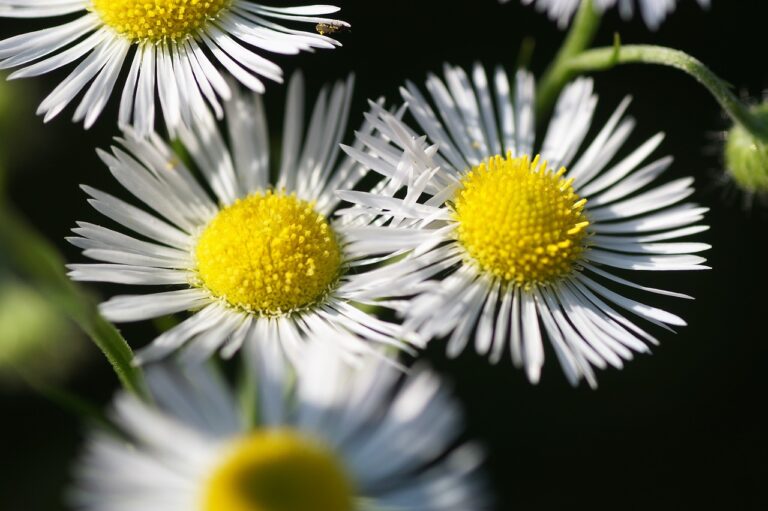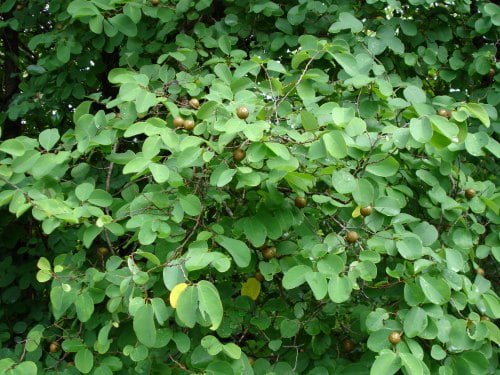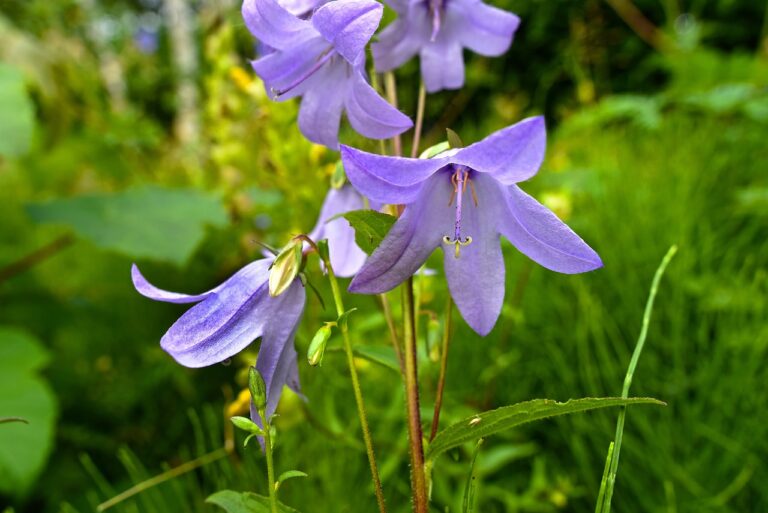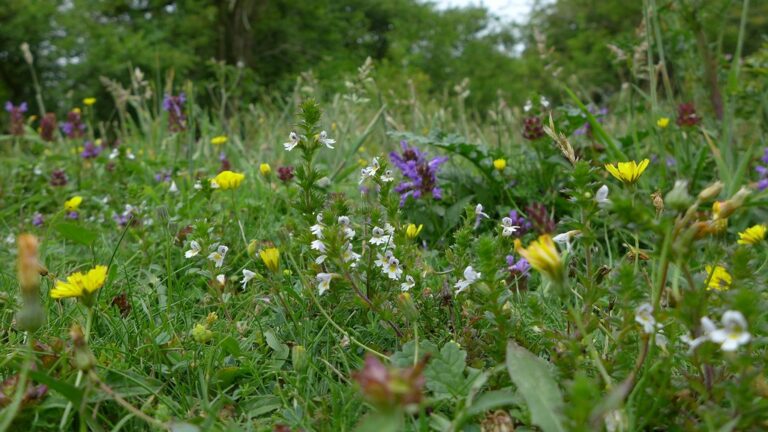Air-Purifying Plants
Hey there! Picture this: you step into a room and instantly, you’re surrounded by lush greenery. The air is clean and refreshing, making you feel rejuvenated. How amazing would it be to have that kind of tranquil environment in your own home? Well, with air-purifying plants, you can make it a reality.
These incredible plants have a special talent for filtering out toxins, which means they can significantly improve the air quality in your space. Plus, they have a positive impact on your well-being. It’s like having your very own botanical guardians, fighting indoor pollution and keeping you healthy.
But air-purifying plants aren’t just practical, they also bring a touch of nature and beauty to your home. They add a vibrant and natural element that can transform any space into a soothing oasis. It’s like having a little piece of nature right at your fingertips.
Now, you might be wondering, which plants are the best at purifying the air? Well, there are several options to choose from, like the peace lily, snake plant, or spider plant. Each of these plants has its own unique qualities and can work wonders in different environments.
So, whether you’re looking to combat indoor pollution, create a peaceful atmosphere, or simply infuse your space with a touch of green, air-purifying plants are here to serve you. They’re like your very own air-cleaning superheroes, ready to make your home a healthier and more beautiful place to be.
So why not give it a try? Bring some air-purifying plants into your space and experience the magic for yourself. Trust me, you won’t be disappointed.
Key Characteristics
To identify air-purifying plants, look for specific key characteristics that make them effective at filtering and detoxifying the air in your home. These plants not only add beauty to your living space but also contribute to improving the overall air quality.
When choosing air-purifying plants, consider their life span and ability to enhance the air you breathe.
Firstly, consider the life span of the plant. Opt for plants that have a longer lifespan, as they’ll provide continuous air purification benefits. Plants such as the snake plant (Sansevieria) and peace lily (Spathiphyllum) have relatively long life spans, ensuring a sustained improvement in air quality over time.
Secondly, consider the plant’s ability to enhance air quality. Look for plants that have been scientifically proven to filter and detoxify the air. Examples include the spider plant (Chlorophytum comosum), which is known for its ability to remove indoor air pollutants such as formaldehyde and xylene. Another excellent choice is the Boston fern (Nephrolepis exaltata), which is effective at removing airborne pollutants like benzene and toluene.
Additionally, consider the plant’s ability to release oxygen. Plants undergo photosynthesis, a process that converts carbon dioxide into oxygen. This natural process helps improve air quality by increasing oxygen levels. Plants such as the areca palm (Dypsis lutescens) and rubber plant (Ficus elastica) are known for their high oxygen-producing capabilities.
Life Cycle
As you consider air-purifying plants for your home, it’s important to understand the life cycle of these plants. By understanding the life cycle, you can make informed decisions about their care and reap the benefits and advantages they offer in terms of air purification and environmental impact.
The life cycle of air-purifying plants begins with their germination. Seeds are planted in a suitable growing medium and provided with the right conditions of light, temperature, and moisture. With proper care and nourishment, the seeds sprout and develop into seedlings.
Once the seedlings have grown to a certain size, they’re ready to be transplanted into larger containers or directly into the ground. This phase is crucial for the plants to establish their roots and adapt to their new environment. Adequate watering, sunlight, and nutrients are essential during this stage.
As the air-purifying plants continue to grow, they enter the vegetative stage. During this phase, the plants focus on leaf and stem development. The leaves play a vital role in air purification as they absorb pollutants and release oxygen. Regular pruning and maintenance help promote healthy growth and maximize the plants’ air-purifying capabilities.
After the vegetative stage, air-purifying plants enter the reproductive phase. This is when they produce flowers and, eventually, seeds. The flowers not only add beauty to your space but also attract pollinators like bees and butterflies. The pollinators aid in the reproduction process, and the seeds they produce can be collected for future planting or shared with others.
Understanding the life cycle of air-purifying plants allows you to care for them effectively and enjoy their benefits. From their early stages of growth to their reproductive phase, these plants have a positive environmental impact by improving indoor air quality and adding greenery to your surroundings.
Habitat and Growing Conditions
Understanding the life cycle of air-purifying plants provides valuable insight into their habitat and growing conditions. When it comes to habitat, air-purifying plants can thrive both indoors and outdoors, depending on the species. Some plants are more suited for indoor environments, while others prefer the great outdoors.
As for growing conditions, sunlight requirements play a crucial role in the successful cultivation of these plants. Here are some key points to consider:
- Indoor vs. Outdoor:
- Indoor air-purifying plants are well-suited for environments with limited natural light, making them ideal for offices, apartments, and other indoor spaces. They can thrive even in the absence of direct sunlight, relying on artificial light sources.
- Outdoor air-purifying plants, on the other hand, need ample sunlight to grow and thrive. They’re best suited for gardens, balconies, and other outdoor spaces where they can receive direct sunlight for several hours each day.
- Sunlight Requirements:
- Some air-purifying plants, such as snake plants and pothos, can tolerate low light conditions and can survive with minimal sunlight. These plants are perfect for areas with limited natural light or for those who can’t provide direct sunlight.
- Other air-purifying plants, like peace lilies and spider plants, require moderate to bright indirect sunlight. Placing them near a window where they can receive filtered sunlight is ideal.
Understanding the habitat and growing conditions of air-purifying plants is essential for their successful cultivation. Whether you choose to grow them indoors or outdoors, it’s important to provide the right amount of sunlight according to their specific requirements. By doing so, you can create a healthy and refreshing environment while serving others with the benefits of clean air.
Popular Varieties
Now let’s explore some popular varieties of air-purifying plants that you can consider for your indoor or outdoor space. These plants have been proven to bring numerous benefits to your environment, particularly in improving indoor air quality.
One popular variety is the Peace Lily (Spathiphyllum). This beautiful plant not only adds a touch of elegance to your space but also helps to remove toxins such as formaldehyde, benzene, and trichloroethylene from the air. It thrives in low light conditions and requires minimal maintenance, making it an ideal choice for those with busy schedules.
Another well-known variety is the Snake Plant (Sansevieria). This hardy plant is known for its ability to absorb carbon dioxide and release oxygen at night, making it a perfect choice for bedrooms. It also filters out common indoor air pollutants such as xylene, toluene, and benzene. The Snake Plant is easy to care for and can tolerate a wide range of light conditions.
If you’re looking for a plant that not only purifies the air but also adds a pop of color to your space, consider the Spider Plant (Chlorophytum comosum). This vibrant plant is effective in removing formaldehyde and xylene from the air. It thrives in bright, indirect light and requires regular watering.
Lastly, the Boston Fern (Nephrolepis exaltata) is a popular choice for its ability to remove formaldehyde, xylene, and toluene from the air. It prefers bright, indirect light and thrives in humid environments. Regular misting and watering are required to keep this plant healthy.
Incorporating these popular varieties of air-purifying plants into your indoor or outdoor space can greatly enhance your indoor air quality, providing you with a healthier and more pleasant environment to live in.
Cultivation and Care
To successfully cultivate and care for air-purifying plants, you’ll need to follow specific guidelines and provide proper maintenance. Whether you choose to grow these plants indoors or outdoors, each option has its own benefits and drawbacks. Here are some key points to consider:
- Indoor cultivation:
- Benefits:
- Improved air quality: Indoor air can be more polluted than outdoor air due to various factors such as chemicals from cleaning products and furnishings. Air-purifying plants can help remove harmful toxins and improve indoor air quality.
- Aesthetically pleasing: Indoor plants add beauty and a touch of nature to your living spaces, creating a calming and relaxing environment.
- Convenient care: Indoor plants require less water and maintenance compared to outdoor plants. They’re also protected from extreme weather conditions and pests.
- Health benefits: Studies have shown that indoor plants can reduce stress, improve mood, and enhance cognitive function.
- Drawbacks:
- Limited space: Indoor cultivation may be restricted by space constraints, especially in small apartments or houses.
- Less sunlight: Indoor plants may not receive adequate sunlight, which can affect their growth and overall health. Supplemental artificial lighting may be required.
- Pest management: Despite being indoors, plants can still attract pests such as spider mites or fungus gnats. Regular monitoring and appropriate pest control measures are essential.
- Limited variety: Some air-purifying plants may not thrive well indoors, limiting the range of species you can choose from.
- Outdoor cultivation:
- Benefits:
- Natural sunlight: Outdoor plants receive abundant sunlight, which is crucial for their growth and photosynthesis.
- Greater variety: Outdoor cultivation allows you to grow a wider range of air-purifying plants, giving you more choices to suit your preferences and local climate conditions.
- Larger growth potential: Outdoor plants have more space to grow and spread their roots, allowing them to reach their full potential.
- Natural pest control: Outdoor plants benefit from natural predators and environmental conditions that help control pests and diseases.
- Drawbacks:
- Exposure to weather conditions: Outdoor plants are exposed to temperature fluctuations, extreme weather events, and pests. They require frequent monitoring and protection during harsh conditions.
- Greater maintenance: Outdoor plants generally require more water, fertilization, and pruning compared to indoor plants.
- Limited control: You have limited control over environmental factors such as temperature, humidity, and sunlight intensity, which can impact plant growth.
Landscaping and Design
When planning your landscaping and design, consider incorporating air-purifying plants to enhance the aesthetic appeal and improve the air quality of your outdoor spaces. By strategically placing these plants throughout your landscape, you can create a sustainable and healthy environment while maximizing small spaces.
To make the most of your outdoor area, it is important to consider sustainable practices that minimize the impact on the environment. By choosing air-purifying plants, you not only beautify your surroundings but also contribute to cleaner air by removing harmful toxins and pollutants. Incorporating these plants into your landscape design can significantly improve the air quality, creating a healthier and more enjoyable outdoor space for you and your loved ones.
To illustrate the benefits of incorporating air-purifying plants into your landscaping, consider the following table:
| Plant Name | Pollutants Removed | Light Requirements |
|---|---|---|
| Aloe Vera | Formaldehyde, | Bright, indirect |
| Benzene, | sunlight | |
| and Carbon | ||
| Monoxide | ||
| Spider Plant | Formaldehyde, | Low to medium |
| Benzene, | light | |
| Xylene, and | ||
| Carbon Monoxide | ||
| Peace Lily | Formaldehyde, | Low to medium |
| Benzene, | light | |
| Trichloroethylene, | ||
| and Ammonia | ||
| Snake Plant | Formaldehyde, | Low to medium |
| Benzene, | light | |
| and Trichloroethylene |
Common Issues and Solutions
To address common issues and find effective solutions for air-purifying plants, consider the following tips:
- Proper Placement: Ensure that your air-purifying plants are placed strategically throughout your home to maximize their effectiveness. Position them near areas with high indoor air pollution, such as kitchens or bathrooms, to help remove harmful pollutants.
- Regular Maintenance: Regularly clean the leaves of your air-purifying plants to remove dust and debris that can hinder their ability to filter the air. Additionally, check the soil moisture levels and water your plants accordingly, as overwatering can lead to mold growth and other issues.
- Choosing the Right Plants: Different air-purifying plants have varying abilities to remove specific pollutants from the air. Research and select plants that are known to be effective at removing common indoor air pollutants, such as spider plants, peace lilies, or snake plants, based on your specific needs.
- Monitoring Indoor Air Quality: Regularly monitor the indoor air quality in your home to ensure that your air-purifying plants are making a positive impact. Use air quality monitors or rely on visible signs, such as reduced dust accumulation or improved respiratory health, to assess the effectiveness of your plants.
Indoor air pollution poses a significant threat to our health, but air-purifying plants can provide a natural and effective solution. By following these tips and addressing common issues, you can create a healthier living environment for yourself and your loved ones.
Practical Uses
Maximize the benefits of air-purifying plants by incorporating them into your daily life in practical ways. These plants not only add beauty to your home or office space, but they also have the potential to improve indoor air quality and provide various health benefits. By strategically placing air-purifying plants in different areas, you can create a healthier and more pleasant environment.
One practical use of air-purifying plants is to place them in your bedroom. During sleep, your body rejuvenates and repairs itself, and having clean air can enhance this process. Plants such as the Snake Plant (Sansevieria trifasciata) and the Peace Lily (Spathiphyllum spp.) are known for their ability to filter harmful toxins and release oxygen, which can help improve the quality of the air you breathe while you sleep.
Another practical use is to incorporate air-purifying plants into your workspace. Indoor air quality can have a significant impact on productivity and overall well-being. Plants like the Spider Plant (Chlorophytum comosum) and the Aloe Vera (Aloe barbadensis) can help remove common indoor pollutants such as formaldehyde and benzene, creating a healthier and more pleasant working environment.
In addition to the health benefits, air-purifying plants can also serve as natural decor, adding a touch of greenery and tranquility to any space. Here is a table showcasing some popular air-purifying plants and their specific benefits:
| Plant Name | Benefits |
|---|---|
| Snake Plant | Removes toxins such as formaldehyde and xylene |
| Peace Lily | Filters out harmful substances like benzene and trichloroethylene |
| Spider Plant | Absorbs pollutants like formaldehyde and carbon monoxide |
| Aloe Vera | Eliminates toxins from cleaning products and improves air quality |
| English Ivy | Reduces airborne mold and purifies the air |
| Areca Palm | Removes formaldehyde and benzene from the air |
Incorporating air-purifying plants into your daily life can have a positive impact on your indoor air quality and overall well-being. By carefully selecting and placing these plants in different areas, you can create a healthier and more enjoyable environment for yourself and those around you.
Frequently Asked Questions
Can Air-Purifying Plants Completely Eliminate Indoor Air Pollution?
Air-purifying plants can indeed help reduce indoor air pollution. While they may not completely eliminate it, they’re effective in removing certain toxins from the air. These plants work by absorbing harmful gases through their leaves and roots, and converting them into oxygen.
The benefits of air-purifying plants include improved air quality, reduced respiratory issues, and increased productivity. However, it’s important to note that other measures such as proper ventilation and regular cleaning are also necessary for optimal air purification.
Are Air-Purifying Plants Safe for Households With Pets?
Air-purifying plants have gained popularity for their ability to clean indoor air and reduce allergies.
But when it comes to pet safety, the question arises: are these plants safe for households with furry friends?
It’s important to consider that some air-purifying plants can be toxic to pets if ingested.
While they may help improve air quality, it’s crucial to choose non-toxic varieties and keep them out of reach from curious paws.
How Often Should I Water Air-Purifying Plants?
When it comes to watering your air-purifying plants, it’s important to establish a proper watering schedule.
Each plant has different needs, so it’s crucial to research and identify the specific requirements for your plants.
Overwatering can be detrimental to your plants, leading to root rot and other issues. To avoid this, pay attention to signs of overwatering such as yellowing leaves or wilting.
Adjust your watering routine accordingly and ensure your plants receive the right amount of water to thrive.
Can Air-Purifying Plants Survive in Low-Light Environments?
Air-purifying plants can survive in low-light environments, which is beneficial for improving indoor air quality. When selecting plants for these spaces, consider low light tolerant varieties such as pothos, snake plant, or peace lily.
These plants are known for their ability to thrive in areas with limited natural sunlight, making them perfect for brightening up darker rooms while still purifying the air. Remember to provide proper care and occasional exposure to indirect sunlight to ensure their continued health.
Are All Air-Purifying Plants Suitable for Growing Indoors?
Not all air-purifying plants are suitable for growing indoors. It’s important to choose plants that can thrive in the indoor environment and effectively improve your indoor air quality. Some factors to consider include the amount of natural light available, temperature, and humidity levels.
Conclusion
In conclusion, air-purifying plants are an excellent addition to any indoor space or garden. These plants have the ability to filter harmful toxins from the air, improving air quality and promoting a healthier environment.
One interesting statistic to consider is that a NASA study found that certain plants, such as the peace lily and snake plant, can remove up to 87% of indoor air pollutants within 24 hours.
This visual representation showcases the remarkable effectiveness of air-purifying plants in creating a cleaner and fresher atmosphere.






